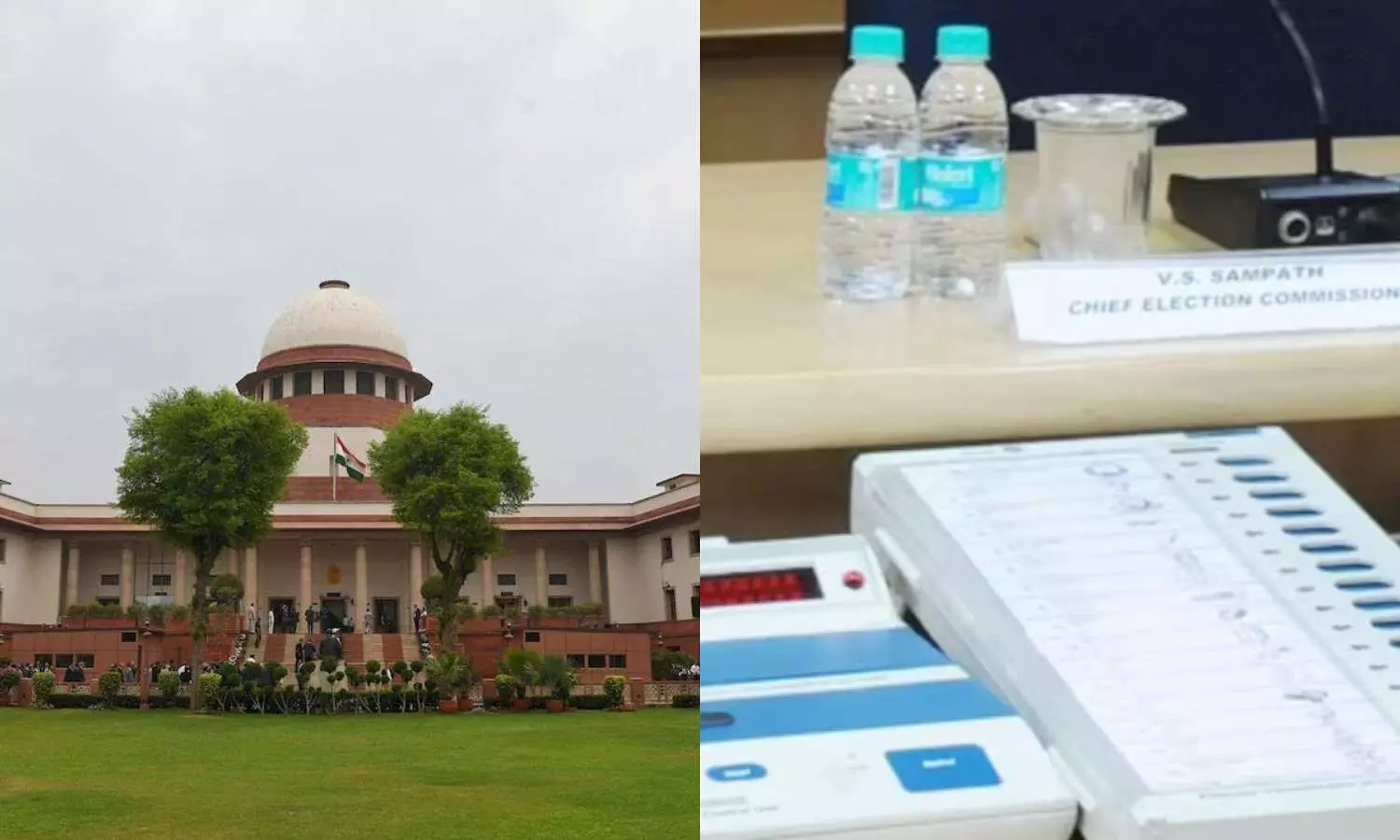Supreme Court denies plea for Full EVM - VVPAT audit
Supreme Court rejects plea for full EVM-VVPAT audit, upholds existing verification procedures, and introduces additional measures for transparency.
image for illustrative purpose

In a major development, the Supreme Court has rejected requests for a full check of Electronic Voting Machines with Voter Verifiable Paper Audit Trail records. The Supreme Court decision for the EVM-VVPAT case was made by Justices Dipankar Datta and Sanjiv Khanna. Initially scheduled for orders on April 18, the cases were reconsidered on April 24 for technical clarifications from the Election Commission. Following this, the verdict was announced.
While both judges authored separate judgements, they concurred on the decision. Justice Khanna stated in court that requests to return to paper ballots, complete EVM-VVPAT verification, and give VVPAT slips to voters were all turned down after considering protocols, technical aspects, and available data.
However, the court issued two directives- firstly, sealing and securing the Symbol Loading Unit (SLU) after symbol loading in VVPATs, and secondly, checking 5% of EVMs' burnt memory semicontrollers post-election results announcement.
Justice Khanna also urged the Election Commission to explore the idea of an electronic machine for counting paper slips and incorporating a barcode for each party symbol.
Justice Datta emphasised the importance of a critical yet constructive approach towards the electoral system, cautioning against blind distrust.
The judgement comes amidst the commencement of phase 2 of the 2024 Lok Sabha Elections.
The background of the case involves petitions filed by NGOs and individuals seeking full VVPAT verification and measures to ensure accurate vote recording and counting. The Election Commission opposed these pleas, arguing against doubts cast on EVMs and VVPATs, citing labour and time constraints in manual verification, and asserting the tamper-proof nature of EVMs.
The Supreme Court's decision upholds the current verification procedures while also introducing some additional measures to enhance transparency and integrity in the electoral process.

